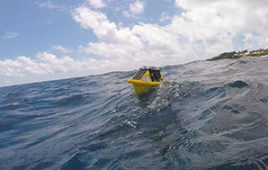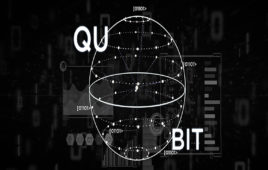 Researchers have shown the potential of a new material for transforming secure optical information storage. In their latest research paper published in Scientific Reports, Swinburne University of Technology researchers Xiangping Li, Qiming Zhang, Xi Chen and Professor Min Gu demonstrated the potential to record holographic coding in a graphene oxide polymer composite.
Researchers have shown the potential of a new material for transforming secure optical information storage. In their latest research paper published in Scientific Reports, Swinburne University of Technology researchers Xiangping Li, Qiming Zhang, Xi Chen and Professor Min Gu demonstrated the potential to record holographic coding in a graphene oxide polymer composite.
“Conventionally, information is recorded as binary data in a disc. If the disc is broken, the information cannot be retrieved,” Director of the Centre for Micro-Photonics at Swinburne, Professor Min Gu, said.
“This is a major operation cost in big data centres, which consist of thousands of disc arrays with multiple physical duplicates of data. The new material allows the development of super-discs, which will enable information to be retrieved — even from broken pieces.”
Graphene oxide is similar to graphene, discovered by Andre Geim and Konstantin Novoselov, who received the 2010 Nobel Prize in Physics for this groundbreaking discovery. Graphene is very strong, light, flexible, nearly transparent, and is an excellent conductor of heat and electricity.
Graphene oxide has similar properties, but also has a fundamental fluorescent property that can be used in bioimaging and for multimode optical recording.
By focusing an ultrashort laser beam onto the graphene oxide polymer, the researchers created a 10-100 times increase in the refractive-index of the graphene oxide along with a decrease in its fluorescence. (The refractive index is the measure of the bending of light as it passes through a medium.)
“The unique feature of the giant refractive-index modulation together with the fluorescent property of the graphene oxide polymer offers a new mechanism for multimode optical recording,” Professor Gu said.
To demonstrate the feasibility of the mechanism, the researchers encoded the image of a kangaroo in a computer generated hologram. The hologram was then rendered as a three-dimensional recording to the graphene oxide polymer. The encrypted patterns in the hologram could not be seen as a normal microscope image, but could be retrieved in the diffracted mode.
“The giant refractive index of this material shows promise for merging data storage with holography for security coding,” Professor Gu said.
“This exciting feature not only boosts the level of storage security, but also helps to reduce the operation costs of big data centres that rely on multiple physical duplicates to avoid data loss.”
The researchers say it could also revolutionise flat screen TV and solar cell technology.
“More importantly, graphene has been deemed as a revolutionary replacement for silicon, which is the platform for current information technologies based on electronics,” Dr Xiangping Li said.
“The giant refractive index we discovered shows the promise of graphene to merge electronics and photonics for the platform of the next generation information technologies.”
This research has been funded under the Australian Research Council Discovery Project scheme and the Australian Research Council Laureate Fellowship program.




